Cycling Sports Science and Human Factors Engineering Measurement Assessment Technology
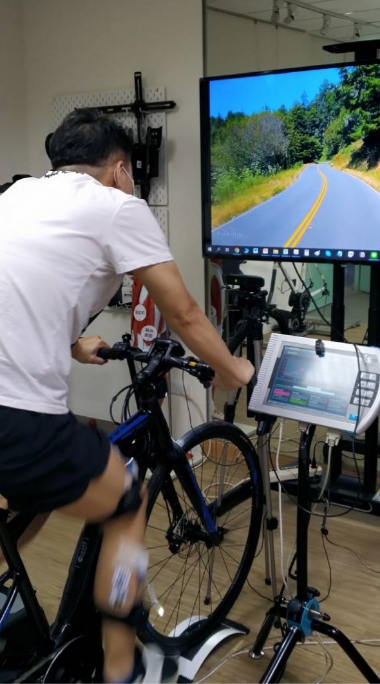
Product features
This technology can be used in the laboratory to model cycling situations, such as drag conditions, frame type, component specifications, and pedaling assistance, etc., and can be employed to develop human response measurement experiments reflecting the purpose of cycling. The scope of human response measurements includes: oxygen consumption, pulse, myoelectric signals, leg joint angle, subjective fatigue, and subjective comfort, and it can provide suggestions for the optimized design of bicycles or exercise equipment based on experimental results.
Technical specifications
Energy metabolism assessment measurement system: Chief functions include measurement of oxygen and carbon dioxide flow and concentration, assessment of exercise intensity, and assessment of energy expenditure (in kcal). System oxygen concentration detection range: 0–25%, carbon dioxide concentration detection range: 0–10%, gas flow detection range: 0–16 l/s;
Electromyography measurement system: Can record changes in muscle activity at up to 12 locations. Baseline noise: <1uV, input impedance: >100M ohm, input range: +/- 6.3 mV, overall gain: 500;
Joint angle: Seven wearable IMU sensors, can measure bilateral leg cycling acceleration, angular acceleration, and angle between limb segments; sampling rate: 200 Hz, can record synchronously with electromyography and vehicle measurement systems.
Bicycle Carbon Fiber Composite Process Parameter Planning and Research
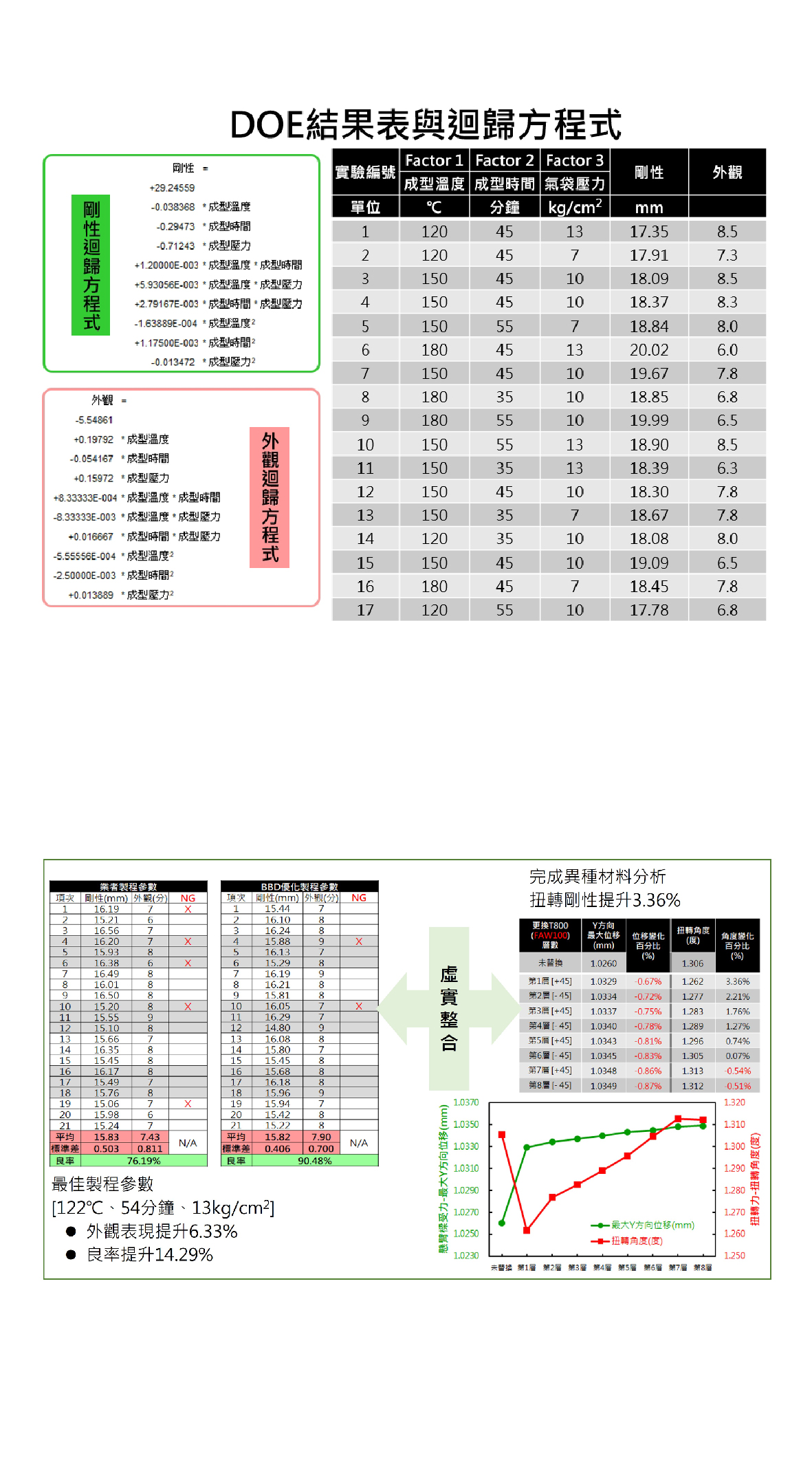
Product features
Establishes a process analysis and optimization technology, performs process optimization for the three factors of gas bag forming temperature, forming time, and forming pressure, and yields excellent process parameters for use in product manufacturing, enhancing product yield rate and stability. In addition, CAE modeling can also be used to analyze and determine the best method of laminating dissimilar materials, which will allow the best structural strength and boost the manufacturer's competitiveness.
Technical specifications
Taking optimization of the two indicators of rigidity and appearance as the goal of handlebar design, process parameter optimization was performed, and numerical models obtained for the two indicators. Numerical analysis yielded the 3 optimal design parameters for these indicators, and the optimized process parameters were compared with the manufacturer's actual process parameters. Rigidity and appearance experiments indicated that there was little difference in rigidity between the two groups, but appearance performance was enhanced by approximately 6.33%, and the yield rate was increased by 14.29%.
Bicycle and Electrically Power Assisted Cycles Sports Science Measurement and Human Factors Engineering Assessment Technology
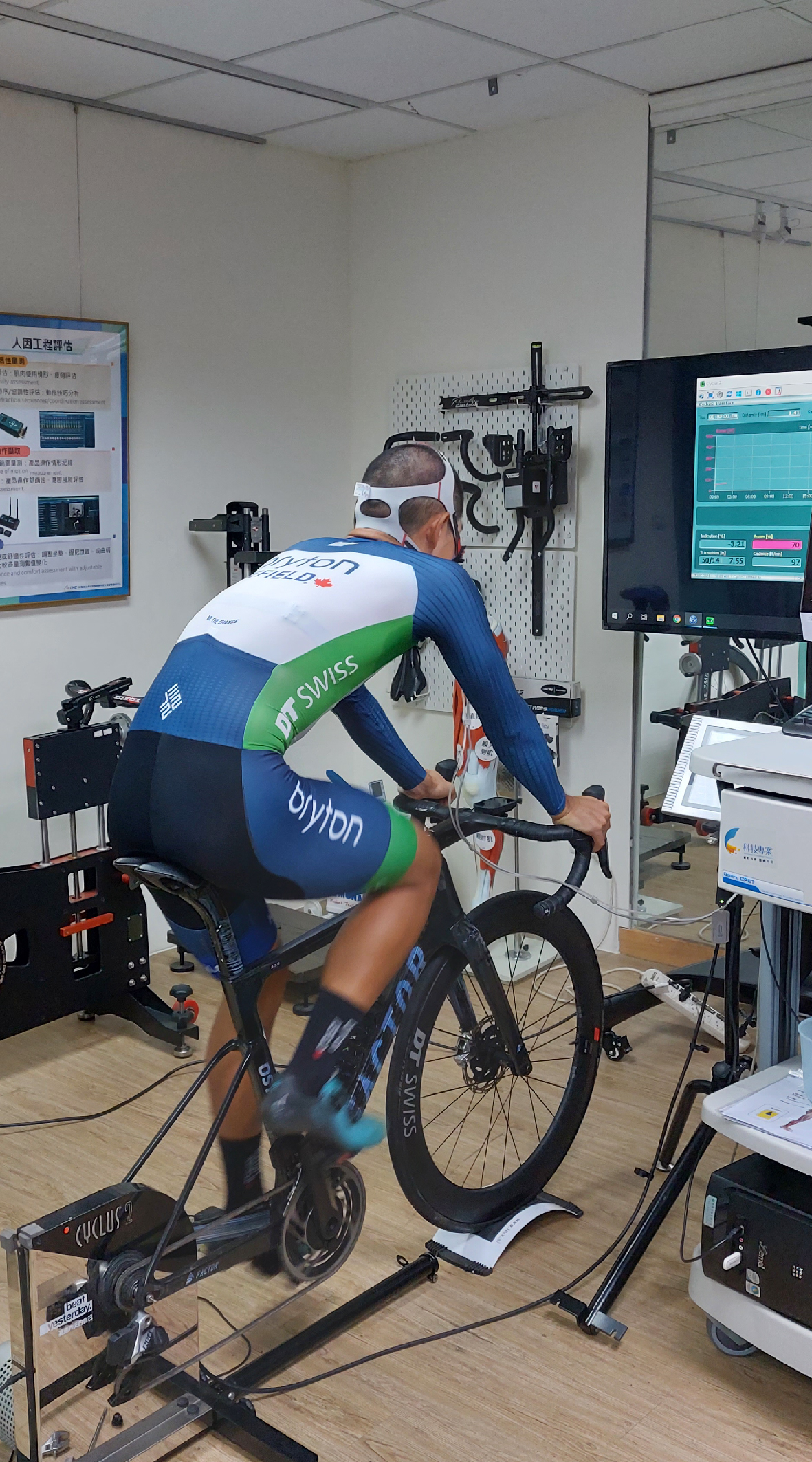
Product features
This technology can measure a cyclist's energy expenditure, muscle activity, limb movements, and pedaling power output, and experiments can be designed to observe a cyclist's athletic performance (power), physiological load, and degree of exertion. The technology can also be used to assess whether a cyclist has excessive exercise intensity or fatigue, allowing the improvement of cycling comfort and energy efficiency. The results of relevant experiments can be used to guide product improvement or the drafting of product specifications.
Technical specifications
Energy metabolism assessment and measurement system: Chief functions include measurement of oxygen and carbon dioxide flow and concentration, assessment of exercise intensity, and assessment of energy expenditure (in kcal). Oxygen concentration detection range: 0–25%, carbon dioxide concentration detection range: 0–10%, gas flow detection range: 0–16 l/s. 2. Electromyography measurement system: Can record changes in muscle activity at up to 6 locations. Baseline noise: <1uV, input impedance: >100M ohm, input range: +/- 6.3 mV, overall gain: 500. 3. Pedal dynamometer: Power measurement error +/- 1.5%, transmits one set of data per second.
Bicycle Internet Connected Technology
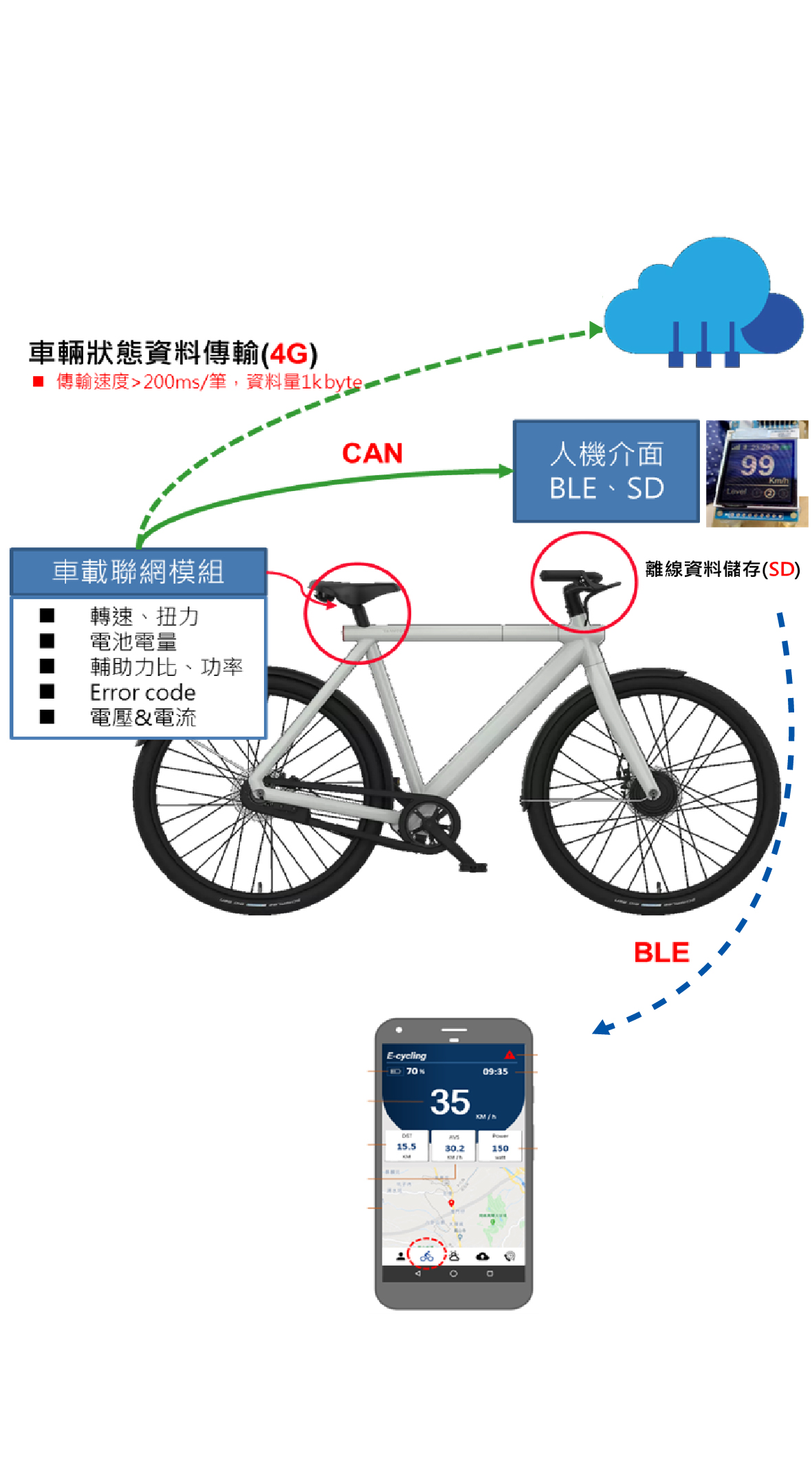
Product features
This technology consists of a vehicular Internet-connected module, and includes an integrated cycling information processing interface, user interface, and communications interface. The information processing interface chiefly collects data from external information sources (including bicycle data, environmental sensing data, and human physiological sensing data), performs formatting (unit conversion and communications format conversion) and data storage, and integrates the further connection of the communications interface with smart devices and cloud databases. Bicycle cycling data, environmental data, and physiological cycling data can be transmitted to the Internet via a smart handheld device, and stored in a cloud database.
Technical specifications
Hardware: (1) Wireless communication interface: BT5.0, NB-IOT (remote). (2) Wired communication interface: CANBUS. (3) Environmental sensor integration: TEMP, GPS, SLOPE. (4) Built-in data storage: SD collection of real-time offline data. (5) Display interface: Translucent display interface. Software: (1) Handheld device information display: Internet-linked platform, real-time display of information. (2) Cloud database design: Receives uploaded data from onboard device, includes product ID, manufacturer ID, and data.
Bicycle Carbon Fiber Composite Property Database

Product features
Provides a carbon fiber property database to the bicycle industry, allowing manufacturers to obtain reference information concerning the properties of commonly-used types of carbon fiber. This information can facilitate virtual-real integration, enhance domestic firms' modeling and analysis technology, and shorten product development time.
Technical specifications
Establishes a database containing the properties of the carbon fiber commonly used in bicycles: Database of the properties of commonly-used bicycle carbon fiber: T700 (FAW100, RC37%), T700 (FAW125, RC37%), T800 (FAW075, RC37%), T800 (FAW100, RC37%), T1000 (FAW097, RC50%), TC36P (FAW100, RC37%), TC36P (FAW125, RC37%). This database of the foregoing 7 types of carbon fiber has an 80% coverage rate, and has verified accuracy of 91.4% and 92.3% for test pieces and tubing.
Bicycle Digitalization System Technology
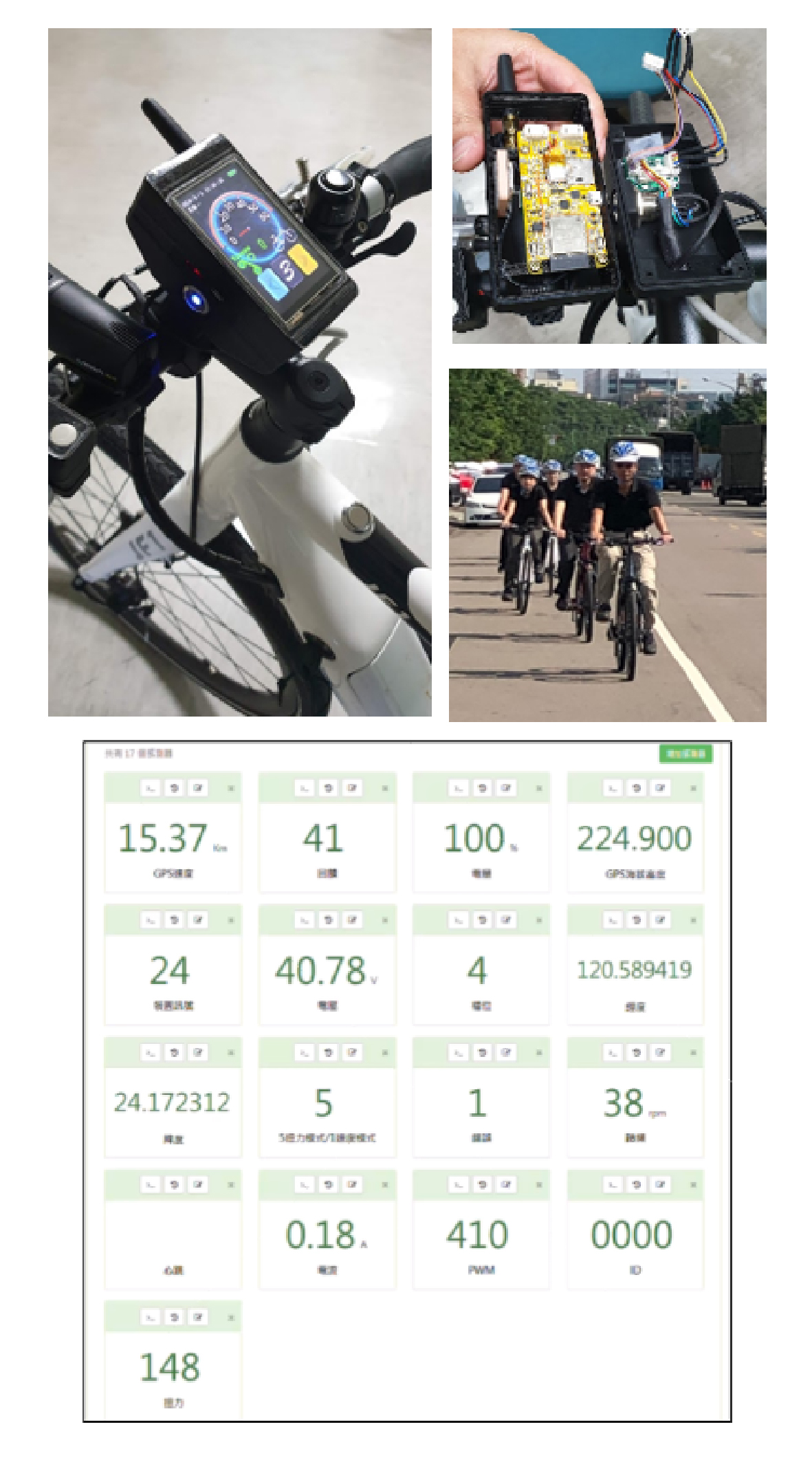
Product features
This technology relies on an information transmission module connected with an electrically power assisted cycle's onboard unit to monitor the bicycle's cycling data, including speed, motor control pwm, battery power level, gear number, voltage, current, and error information, etc. An information transmission module will then transmit relevant data to a cloud platform via an NB-IoT communication interface, enabling real-time display of the electrically power assisted cycle's current cycling information.
Technical specifications
NB-IoT network transmission interface, MQTT communication protocol architecture.
Acquires information from an electrically power assisted cycle's onboard unit, including speed, motor control pwm, battery power level, gear number, voltage, current, and error information, etc.
Data storage on cloud platform and visualization.
Multi-objective Optimization Technology-Frame Design
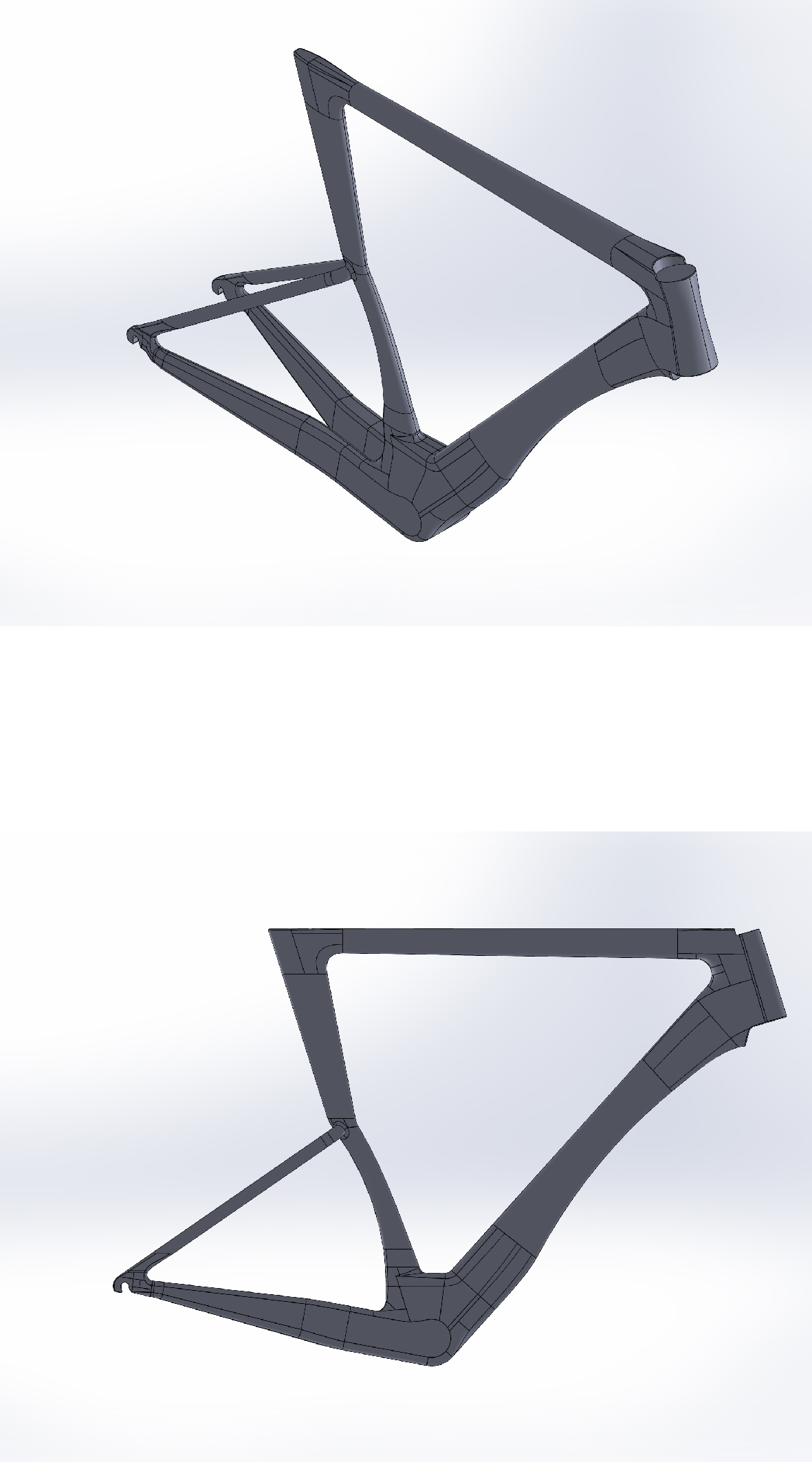
Product features
This multi-variable, multi-objective optimization technology provides design capabilities meeting the design needs of products with varying characteristics, and can quickly obtain optimal results. Taking road bike frame design as an example, this technology can obtain optimal design results after taking the frame's wind resistance, weight, and strength into consideration; it can set and adjust frame tubing cross-sectional shape parameters and trajectories, perform experimental design and determine the number of analytical groups, and find optimal design results. This technology can quickly find results that meet the needs of different physical quantities, and achieve a frame design with light weight and low wind resistance.
Technical specifications
Multi-variable, multi-objective design. 2. Performs integrated analysis of multiple physical quantities. 3. Integrates multiple software platform applications. 4. Technology can be widely used in product development. 5. Large optimized search space.
Multi-Objective Optimization Technology-Road Bike Front Fork Design
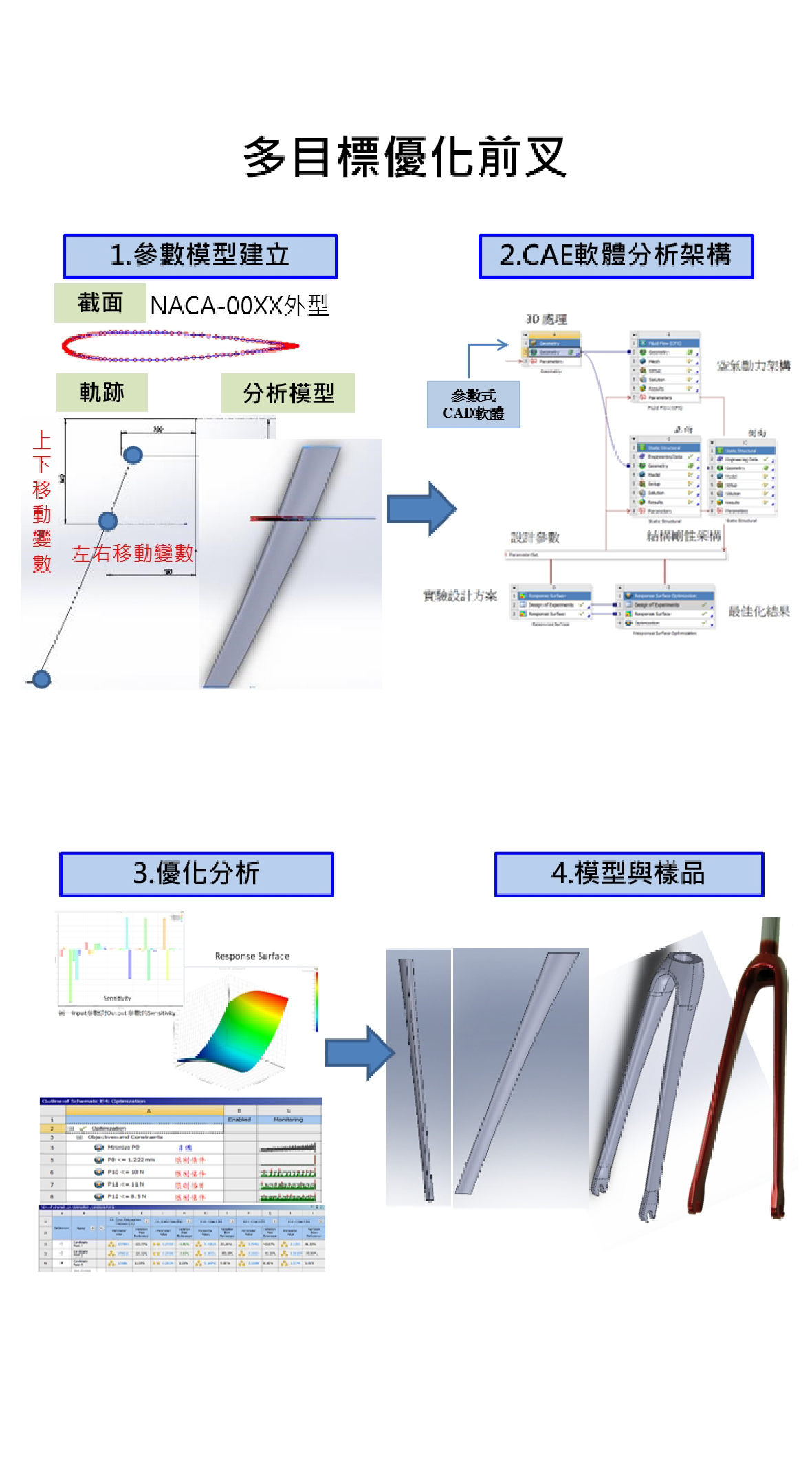
Product features
This multi-variable, multi-objective optimization technology provides design capabilities meeting the design needs of products with varying characteristics, and can quickly obtain optimal results. Taking road front fork design as an example, this technology can obtain optimal design results after taking the front fork's wind resistance, weight, and strength into consideration; it can set and adjust fork leg cross-sectional shape parameters and trajectories, perform experimental design and determine the number of analytical groups, and find optimal design results. This technology can quickly find results that meet the needs of different physical quantities, and achieve a road bike front fork design with light weight and low wind resistance.
Bicycle Flow Field Experiment Modeling Technology
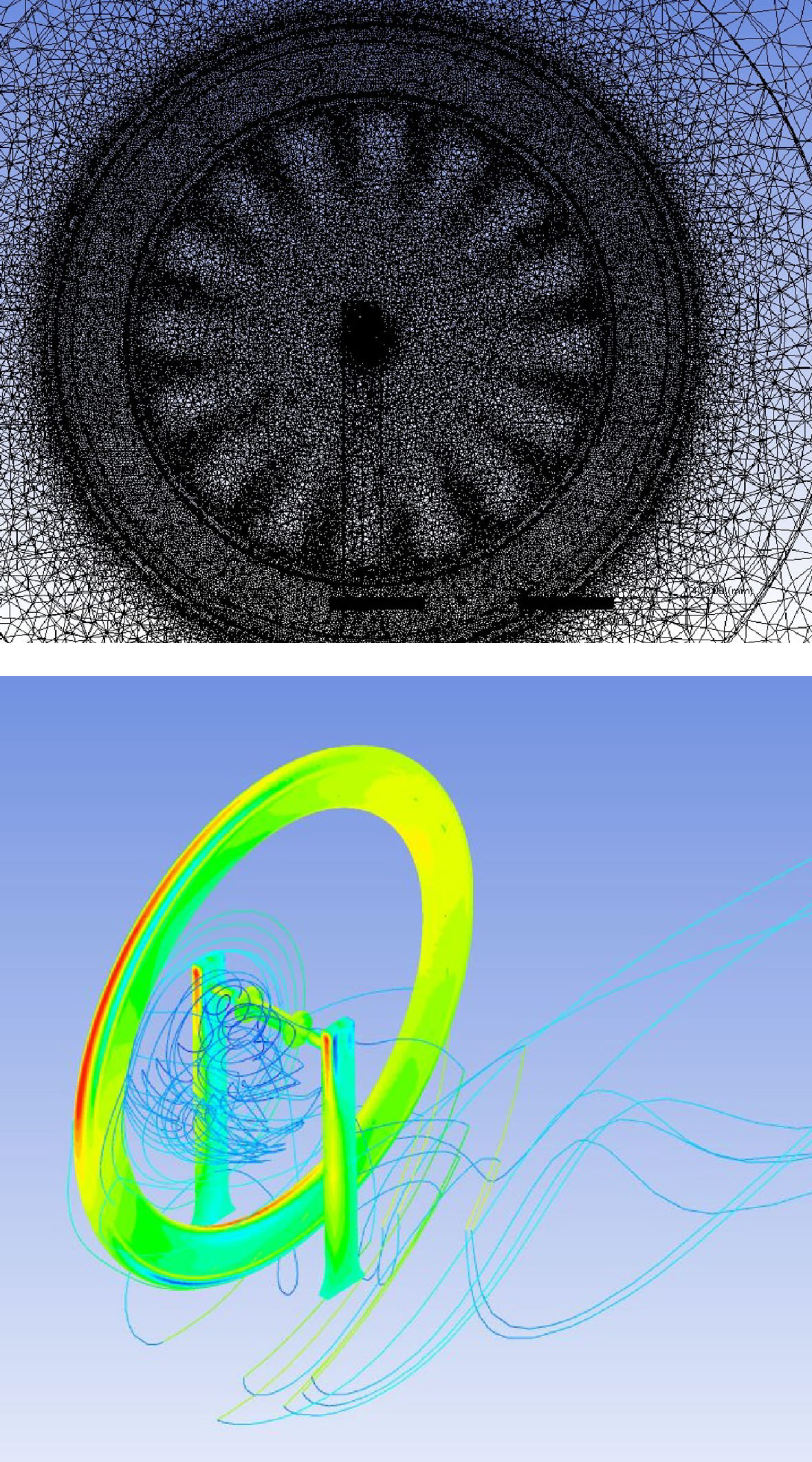
Product features
This project combines aerodynamics computational fluid dynamics (CFD) modeling with actual wind tunnel testing, as well as relevant testing and development of modeling methods. Fluid mechanics calculation software can be used to simulate wind tunnel testing and perform cross-comparisons, ensuring that products have more outstanding and promising characteristics in engineering analysis. In addition, to meet the bicycle industry's need for more aerodynamic products, this technology employs the bicycle frame, front fork, and elements of the human body, including the cyclist's helmet, clothing, and riding posture, as a basis for product improvement and development of higher-grade products. Relevant aerodynamic data inputs can be employed in conjunction with Taiwan's production capacity and capabilities of lightweight, aesthetic design and product planning to propel the domestic bicycle industry to a higher level.